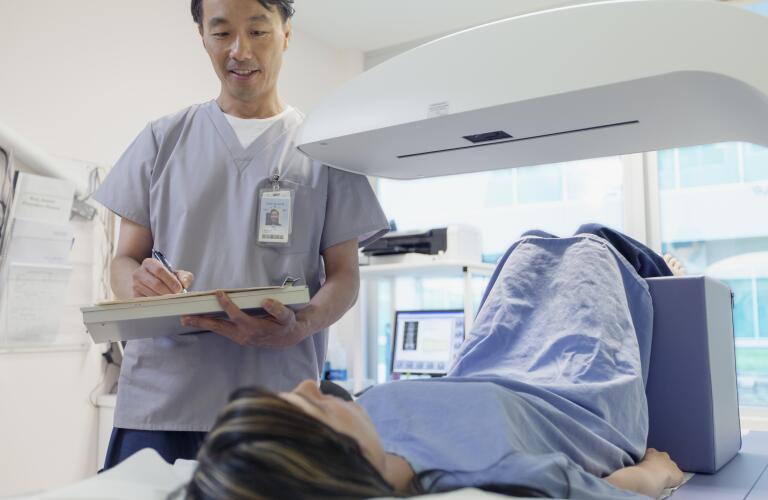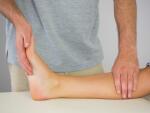
A bone density scan shows how much bone is in your hip, spine and forearm. It detects low bone density (osteopenia) and osteoporosis. These conditions cause thinning and weakening of the bones, sometimes called “brittle bones.” Osteopenia and osteoporosis increase the risk of disabling fractures, including fractures of the hip and spine.
Experts believe that a bone density scan is the most important predictor of a future bone fracture due to osteoporosis. Your doctor can use the results of a bone density scan to help you prevent fractures.
A bone density scan is also known as a dual-energy X-ray absorptiometry, or DEXA scan. It uses low intensity X-rays to take measurements of your bone density. The measurements are compared to a normal standard to give you a score. The radiation dose is less than a chest x-ray, equivalent to the total natural radiation exposure one encounters in an average day.
Bone density scan results are commonly compared to the peak bone density of a healthy 30-year-old adult. Your result is called a T-score.
A T-score of 0 means your bone density is equal to that of a healthy young adult. The lower the T-score, the lower the bone density:
- A score of –1.0 to +1.0 means you have normal bone density.
- A score between –1.0 to –2.5 means you have low bone density (osteopenia).
- A score of –2.5 or below means you have osteoporosis.
Your doctor will interpret your T-score in relation to your physical exam, risks, and medical history, and explain what your bone density scan results mean to you.
You can’t reverse bone loss, but you can protect your bones from further weakening. You can also take measures to prevent fractures. Together with your doctor, you will develop a plan that manages your personal risk factors, such as medical history, diet, and lifestyle.
Treatments include lifestyle changes, medicine, and injury prevention. Your doctor may recommend you:
Decrease your caffeine or alcohol intake.
Increase your calcium and Vitamin D intake with supplements and a diet high in low-fat dairy products, such as 1% milk and cottage cheese.
Increase your weight-bearing and muscle-strengthening activity to at least two and a half hours every week. Examples include yoga, walking, light weight-lifting, or gardening.
Take a prescription medicine, including biophosphates, which preserve bone density. Examples include abaloparatide (Tymlos), alendronate (Fosamax), ibandronate (Boniva) and risedronate (Actonel, Atelvia).
Quit smoking if you currently smoke.
Modify your surroundings to reduce your risk of falling and fracturing a bone. You can prevent falls by using walkers and assistive devices, ensuring prescription glasses are up-to-date, and removing tripping hazards from your home, such as throw rugs.



